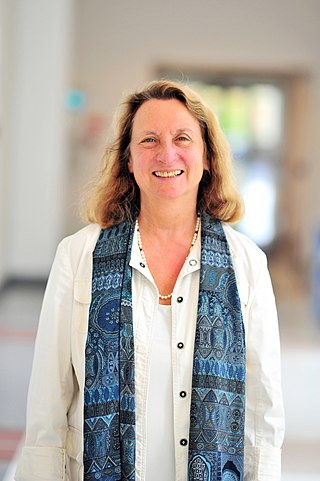External links
- APS Fellow Listing for Richard Klein
- AAS Fellow Listing for Richard Klein
- Richard Klein's Home Page at Berkeley
Richard Klein | |
|---|---|
| Education | Bachelor's Degree(Physics); Pensselaer Polytechnic Institute (1966) PhD(Physics) Brandeis University (1973). |
| Occupation | Adjunct Professor of Astronomy |
| Employer | University of California |
| Title | Professor |
Richard Klein is an adjunct professor of Astronomy at the University of California, Berkeley and a Scientific Staff Member at the Lawrence Livermore National Laboratory (LLNL). Klein received his bachelor's degree in physics from Rensselaer Polytechnic Institute in 1966 and his PhD in physics from Brandeis University in 1973.
Klein has pioneered methods of radiative transfer and adaptive mesh refinement applied to computational astrophysics over the last several decades. He played a central role in the development of the radiation-driven implosion model for induced star formation and in developing the leading theory of stellar winds for "hot stars". He has pursued a broad range of problems ranging from star formation to high energy physics, including the interactions of supernovae shocks with interstellar clouds, the formation of low and high mass stars, accretion onto neutron stars, and Compton-heated winds from accretion disks. He established the Berkeley Astrophysical Fluid Dynamics Group with Christopher McKee to develop the technique of adaptive mesh refinement for numerical simulations of astrophysical fluid dynamics. In addition, he has applied these simulations to scaled laboratory astrophysics experiments. He was recognized by fellowships in both the American Physical Society (APS) in 2003 and the American Astronomical Society in 2021 for his contributions to computational astrophysics.
Christopher Fulton McKee is an astrophysicist.
In numerical analysis, adaptive mesh refinement (AMR) is a method of adapting the accuracy of a solution within certain sensitive or turbulent regions of simulation, dynamically and during the time the solution is being calculated. When solutions are calculated numerically, they are often limited to predetermined quantified grids as in the Cartesian plane which constitute the computational grid, or 'mesh'. Many problems in numerical analysis, however, do not require a uniform precision in the numerical grids used for graph plotting or computational simulation, and would be better suited if specific areas of graphs which needed precision could be refined in quantification only in the regions requiring the added precision. Adaptive mesh refinement provides such a dynamic programming environment for adapting the precision of the numerical computation based on the requirements of a computation problem in specific areas of multi-dimensional graphs which need precision while leaving the other regions of the multi-dimensional graphs at lower levels of precision and resolution.
Computational magnetohydrodynamics (CMHD) is a rapidly developing branch of magnetohydrodynamics that uses numerical methods and algorithms to solve and analyze problems that involve electrically conducting fluids. Most of the methods used in CMHD are borrowed from the well established techniques employed in Computational fluid dynamics. The complexity mainly arises due to the presence of a magnetic field and its coupling with the fluid. One of the important issues is to numerically maintain the (conservation of magnetic flux) condition, from Maxwell's equations, to avoid the presence of unrealistic effects, namely magnetic monopoles, in the solutions.

GADGET is free software for cosmological N-body/SPH simulations written by Volker Springel at the Max Planck Institute for Astrophysics. The name is an acronym of "GAlaxies with Dark matter and Gas intEracT". It is released under the GNU GPL. It can be used to study for example galaxy formation and dark matter.

Phillip Colella is an American applied mathematician and a member of the Applied Numerical Algorithms Group at the Lawrence Berkeley National Laboratory. He has also worked at Lawrence Livermore National Laboratory. He is known for his fundamental contributions in the development of mathematical methods and numerical tools used to solve partial differential equations, including high-resolution and adaptive mesh refinement schemes. Colella is a member of the US National Academy of Sciences.
John B. Bell is an American mathematician and the Chief Scientist of the Computational Research Division at the Lawrence Berkeley National Laboratory. He has made contributions in the areas of finite difference methods, numerical methods for low Mach number flows, adaptive mesh refinement, interface tracking and parallel computing. He has also worked on the application of these numerical methods to problems from a broad range of fields, including combustion, shock physics, seismology, flow in porous media and astrophysics.

Adam Frank is an American physicist, astronomer, and writer. His scientific research has focused on computational astrophysics with an emphasis on star formation and late stages of stellar evolution. His work includes studies of exoplanet atmospheres and astrobiology. The latter include studies of the generic response of planets to the evolution of energy-intensive civilizations (exo-civilizations).

Computational astrophysics refers to the methods and computing tools developed and used in astrophysics research. Like computational chemistry or computational physics, it is both a specific branch of theoretical astrophysics and an interdisciplinary field relying on computer science, mathematics, and wider physics. Computational astrophysics is most often studied through an applied mathematics or astrophysics programme at PhD level.

Oded Regev is a physicist and astrophysicist, professor emeritus of the Technion, Israel Institute of Technology. He is best known for his theoretical application of fluid dynamics and dynamical systems theory to astrophysics.

Dmitry Valerevich Bisikalo is a Russian astrophysicist and an expert in the interaction of binary stars. He is a member of the Russian Academy of Sciences, the IAU, Acting Chief of the Scientific Secretary of the Russian Academy of Sciences and Chief Researcher of the Institute of Astronomy of the Russian Academy of Sciences (RAS).
Marsha J. Berger is an American computer scientist. Her areas of research include numerical analysis, computational fluid dynamics, and high-performance parallel computing. She is a Silver Professor (emeritus) of Computer Science and Mathematics in the Courant Institute of Mathematical Sciences of New York University. She is Group Leader of Modeling and Simulation in the Center for Computational Mathematics at the Flatiron Institute.

Elaine Surick Oran is an American physical scientist and is considered a world authority on numerical methods for large-scale simulation of physical systems. She has pioneered computational technology to solve complex reactive flow problems, unifying concepts from science, mathematics, engineering, and computer science in a new methodology. An incredibly diverse range of phenomena can be modeled and better understood using her techniques for numerical simulation of fluid flows, ranging from the tightly grouped movements of fish in Earth's oceans to the explosions of far-flung supernovae in space. Her work has contributed significantly to the advancement of the engineering profession.
Edmund Bertschinger is an American theoretical astrophysicist and cosmologist and professor of physics at MIT.

Frans Pretorius is a South African and Canadian physicist, specializing in computer simulations in astrophysics and numerical solutions of Einstein's field equations. He is professor of physics at Princeton University and director of the Princeton Gravity Initiative.
Catherine Jane Clarke is a Professor of Theoretical Astrophysics at the University of Cambridge and a fellow of Clare College, Cambridge. In 2017 she became the first woman to be awarded the Eddington Medal by the Royal Astronomical Society. In 2022 she became the first female director of the Institute of Astronomy, Cambridge.

Fotis Sotiropoulos is a Greek-born American engineering professor and university administrator known for his research contributions in computational fluid dynamics for river hydrodynamics, renewable energy, biomedical and biological applications. He currently serves as the Provost and Senior Vice President for Academic Affairs of Virginia Commonwealth University, a position he has held since August 1, 2021
James McLellan Stone is an American astrophysicist who specialises in the study of fluid dynamics. He is currently a faculty member at the school of natural sciences at the Institute for Advanced Study. Stone is also the Lyman Spitzer Jr. Professor of Theoretical Astrophysics, emeritus, and professor of astrophysical sciences and applied and computational mathematics, emeritus, at Princeton University.
Eve Charis Ostriker is an American astrophysicist, known for her research on star formation and on related topics involving superbubbles, molecular clouds, young stars, computational fluid dynamics, and supersonic turbulence. She is a professor in the Department of Astrophysical Sciences of Princeton University.

Richard Van Evera Lovelace is an American astrophysicist and plasma physicist. He is best known for the discovery of the period of the pulsar in the Crab Nebula, which helped to prove that pulsars are rotating neutron stars, for developing a magnetic model of astrophysical jets from galaxies, and for developing a model of Rossby waves in accretion disks. He organized a US-Russia collaboration in plasma astrophysics, which focused on modeling of plasma accretion and outflows from magnetized rotating stars.
James "Jim" Ricker Wilson was an American theoretical physicist, known for his pioneering research in numerical relativity and numerical relativistic hydrodynamics.